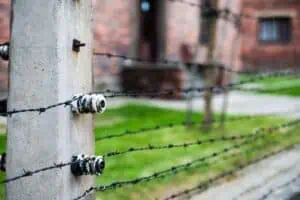How to Install Wood Fence Post?
Installing wood fence posts is an easy and affordable way to add privacy and security to your home or property. But there are some things you should know before starting this task, to ensure your post-installation goes smoothly and will last a long time.
(Looking for “Same-day fence removal” Contact us today!)

Clearing and Levelling Your Fence Line
Before you begin any digging, make sure your fence line is level and free from any obstructions such as rocks or tree roots. This will prevent any unevenness that could cause your posts to fall or become crooked, and it will also be easier for you to dig the holes that you need for each post.
The Next Step is to Mark Your Hole Position
Before putting your wood fence post in the ground, you need to find a good spot that is level and free from obstacles. To do this, you can use a spray-on marking solution. It will not be as accurate as a pencil and pen, but it can be a quick fix for a lot of fencing projects.
You can also hire a surveyor to come out and mark your fence line for you. It’s best to do this before you start digging because it will save you a lot of time and trouble later on.
If you’re planning to install your fence on an existing structure, such as a garage or shed, it’s important to know where those structures are located. This will help you avoid having your fence posts fall in the wrong direction, and it will also make the process much more efficient when it comes to installing your new wooden fence post.
Depending on your climate and your soil, it’s important to choose the right type of wood for your fence post-installation. Redwood, black locust, and cedar are all strong, sturdy options that are well-suited to the job.
To help your wood fence post remain stable, you need to place it in a hole that is as wide as it is tall. The size of the hole depends on whether you’re using the stake and wire method, or if you’ll anchor it in concrete.
After digging the hole, fill it in with a layer of gravel to help create better drainage and protect against rust and rot. This can be any clean gravel or crushed stone, but it should be about 2 inches or 50 mm thick.
The bottom of the hole should be covered with a few centimeters of soil to allow water that seeps into the hole to drain away. This will keep the post from absorbing any water and rotting in the base of the post, which could lead to serious problems down the road.
When setting your fence post, it’s also important to check that it’s perfectly level and plumb by using a spirit-level checker. If not, you might need to reposition the post to get it in the right position.
Once the post is in the hole, fill the hole with a layer of concrete to keep the post in place. You can either use ready-mixed concrete or mix your own to the desired consistency, following the instructions on the packaging.

